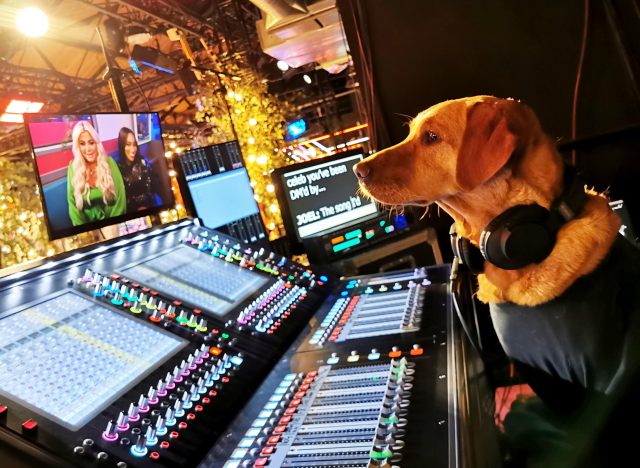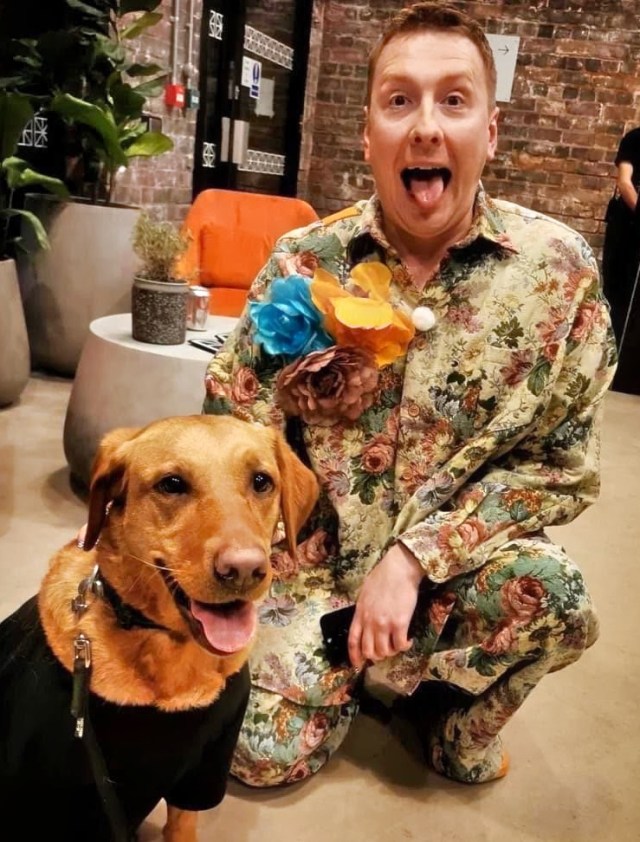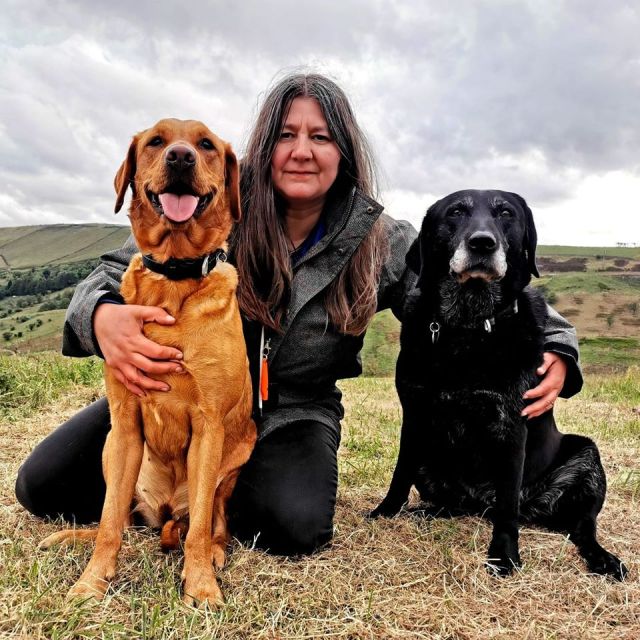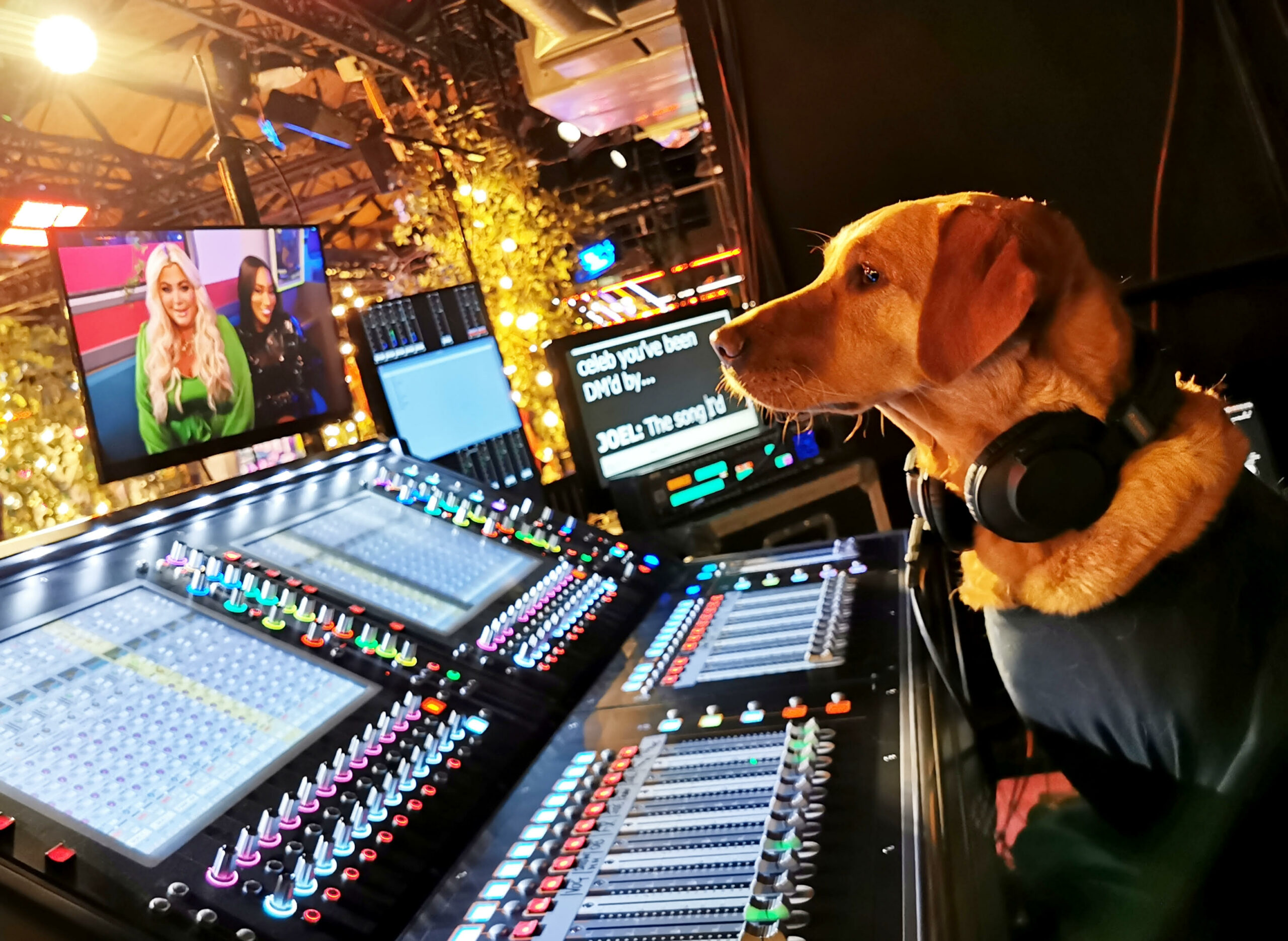
By Marie Carter-Robb
A leading canine first aider had an emergency of her own this week when her beloved ‘celebrity’ dog suffered a gruesome injury while out on her walk.
Rachel Bean, who travels the world giving canine first aid training, was walking her at Moorgate Quarry in Saddleworth when the pup came running out of the heather with a three inch cut beneath her carpal pad, just millimetres from her major arterial blood supply.

Four year-old Chilli is an animal actor, and has been one of the comedy stars of the Channel Four series ‘Late Night Lycett’, a running joke is that Joe is going to sack the pup, only for her to win a reprieve after appeals from the public.
Rachel said: “Chilli came running out of the heather and I saw the cut straight away, I am a veterinary nurse so knew what to do, but she was so lucky that it didn’t hit her major artery, she could have died.”
The poorly pup was raced to the Vets 4 Pets in Cheadle, where Rachel works, and her owner applied general anesthetic while a vet cleaned and sealed the wound.
Rachel, from Grotton, Gtr Manchester, who wrote the iPET Network’s qualification in canine first aid, added: “It just goes to show that accidents can happen at any time. Luckily I had the training to act calmly and quickly, but it could have been really bad.
“Chilli is strong and is up and about again, after giving us all a scare you would think nothing had ever happened to her.”
Since Chilli was ten weeks-old she and Rachel have traveled the country giving first aid demonstrations to pet professionals and individuals, and Chilli’s demonstrations have already helped to save hundreds of canine lives.
Rachel added: “Chilli absolutely loved playing Linda Biscuits on Late Night Lycett, and we think she is the star of the show.

“It’s hilarious how much of a running joke her appearance became, and despite his protestations we think that Joe is secretly loving sharing the limelight with a dog.
“But her real job, helping me show pet professionals how to save dog’s lives, is her true calling, she is amazing at our sessions and is trained to act out worst case scenarios, so that I can demonstrate what to do in that particular crisis.
“Without Chilli the courses would not be as engaging or fun, and she is the perfect sidekick. She is loving her TV fame, but there is so much more to her than simply Linda Biscuits.”
Chilli is no stranger to showbiz appearances, and has appeared in TV shows including Dragon’s Den and numerous TV commercials.
Rachel co-owns the Vet On Set business, which sends vets to TV and film sets, ensuring that animal welfare for creatures like Chilli is the heart of all filming in the UK.
Rachel added: “Everyone loves to see animals on the big and small screen, but no one wants to watch animal stars who have been mistreated. Vet on Set is all about working with the animal during filming to ensure that they are comfortable, happy and that their needs are met at all time.”
To find out more about Rachel Bean go to www.rachelbean.co.uk
